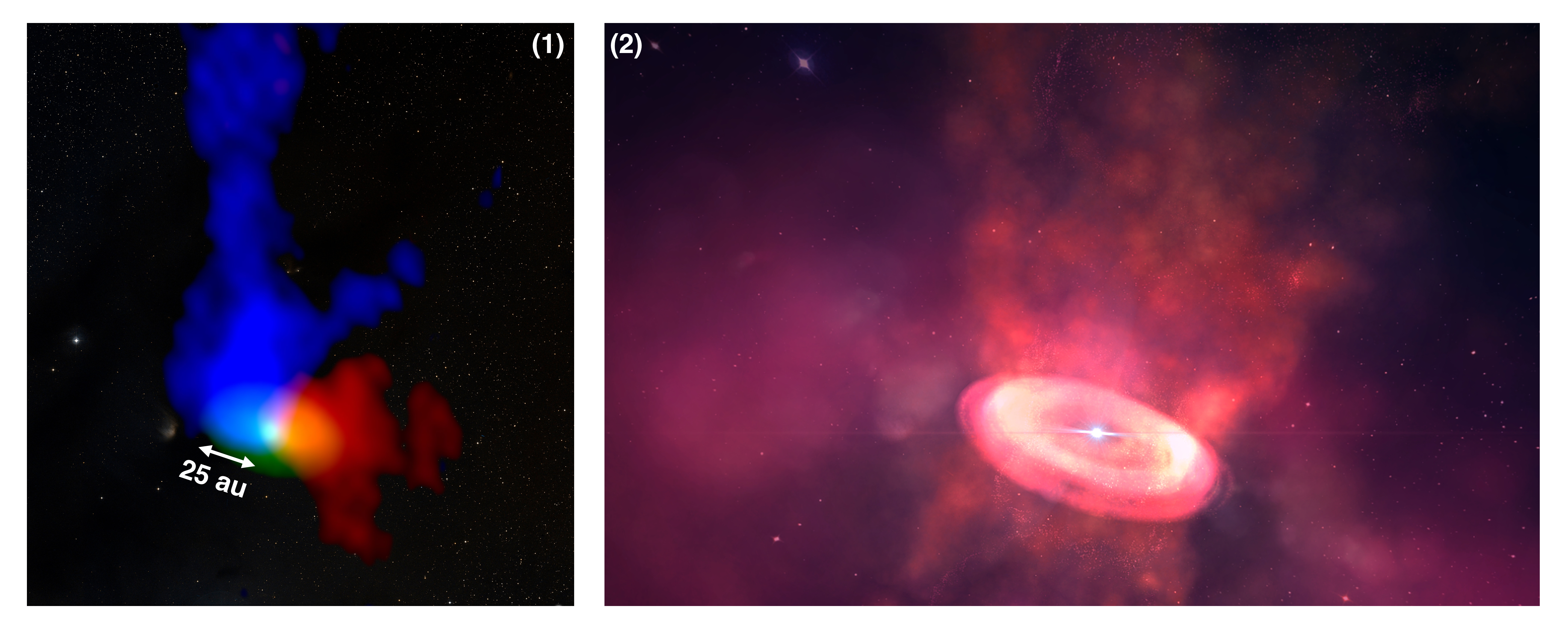Daily Image
16-12-2016The launching point of a protostellar outflow resolved
| Submitter: | Matthijs H.D. van der Wiel |
| Description: | Molecular outflows are signposts of the star formation process and when they were first discovered in the 1980s, they came as a total surprise. The expectation at that time was to detect infall of matter, not outflows. It has since then been realized that outflows are important, since their efficient removal of angular momentum allows for inward accretion and the continued growth of stars. Observationally, outflows are now recognized to be ubiquitously present in protostellar systems. But until very recently, the limited angular resolution of observations has prevented us from probing the central engine directly, and thus, the nature of the ejection mechanism has been heavily debated. The main difference between the proposed models is the region in which the acceleration of material takes place: close to the protostar itself (the stellar surface or the disk-star interface) or in an extended region in the circumstellar disk. An international team of astronomers, led by Per Bjerkeli (Copenhagen University) and Matthijs van der Wiel (ASTRON), have used ALMA in its most extended configuration with the aim of resolving the launching region of a rotating molecular outflow. The CO images of the protostar TMC1A, with a resolution of 0.04 arcsec (6 au at 140 parsec distance), are presented in a Letter appearing in this week's issue of Nature: Bjerkeli, Van der Wiel, et al. (2016). These data provide the first direct evidence that a protostellar outflow is launched from an extended region in the circumstellar disk. The launching region extends up to 25 au from the central protostar. The outflow is seen to corotate with the disk from which it is launched. Images: (1) ALMA observations of the TMC1A protostellar system showing how the outflow is lifted from the disk. Green color scale: dust continuum emission at 1.3mm, emanating from the disk. Blue and red colors denote, respectively, blue- and redshifted CO J=2-1 emission emanating from the outflow. The redshifted side of the rotating outflow is partly masked out by a combination of projection effects and self-absorption. (2) Artist impression of the disk wind launching the protostellar outflow. An animated version of this image is available. |
| Copyright: | (1) Per Bjerkeli and co-authors, as well as ESASky (European Space Astronomy Centre; ESAC, Madrid, Spain). (2) Per Bjerkeli and co-authors. |
| Tweet |  |
